
Leap days only happen once every four years. Celebrate this rare occurrence with us by exploring extraordinary wildlife that leap, spring, bound, and everything in between. Whether they’re trying to reach the safety of a ledge, ambush prey, or escape a predator, adaptions that enable impressive jumps are a plus for many species.
From small amphibians and big cats to limber primates, wildlife with astonishing jumping abilities come in all shapes and sizes. Even plants join the fun, like the jumping cholla—a cactus with spikes that detach easily onto unsuspecting desert dwellers. See which species surprise you!
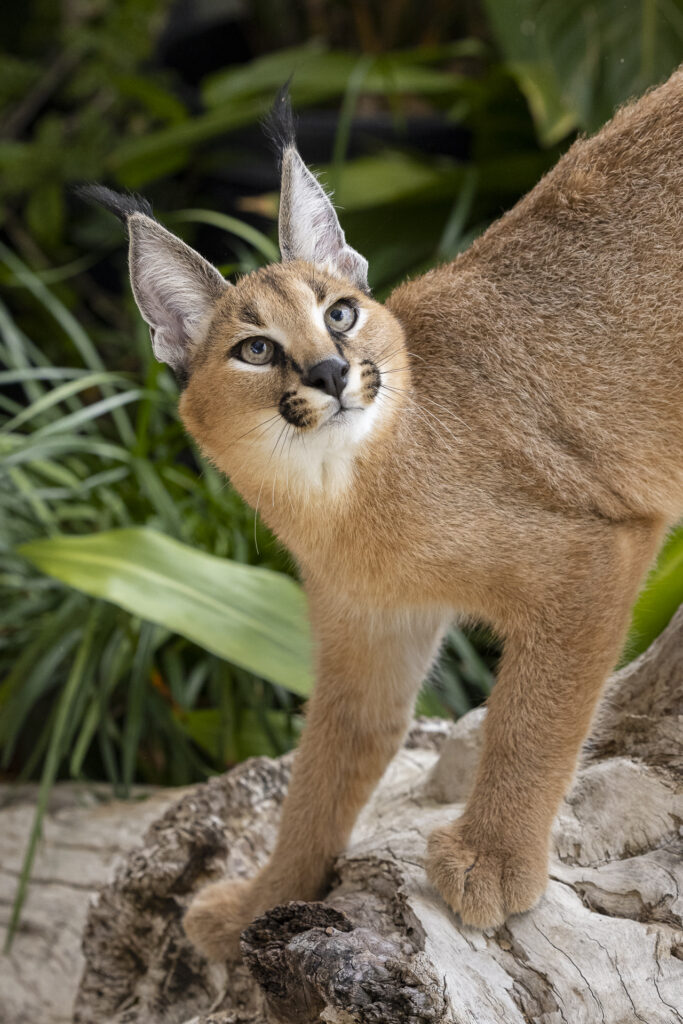
CAT-APULT
Most big cats can jump and pounce on something around 10 feet away. And caracals, the fastest and largest of the small cats, can leap up to 10 feet high in the air. That’s more than double the length of their body! The native range of this agile hunter spans savanna, steppe, and mountainous habitats across Africa, through the Middle East, and into India. With the wide variations in these ecosystems, caracals adjust their method of hunting to the landscapes they inhabit. They use their sharp claws and nimble hunting abilities to sprint after prey or swat them by jumping to remarkable heights.
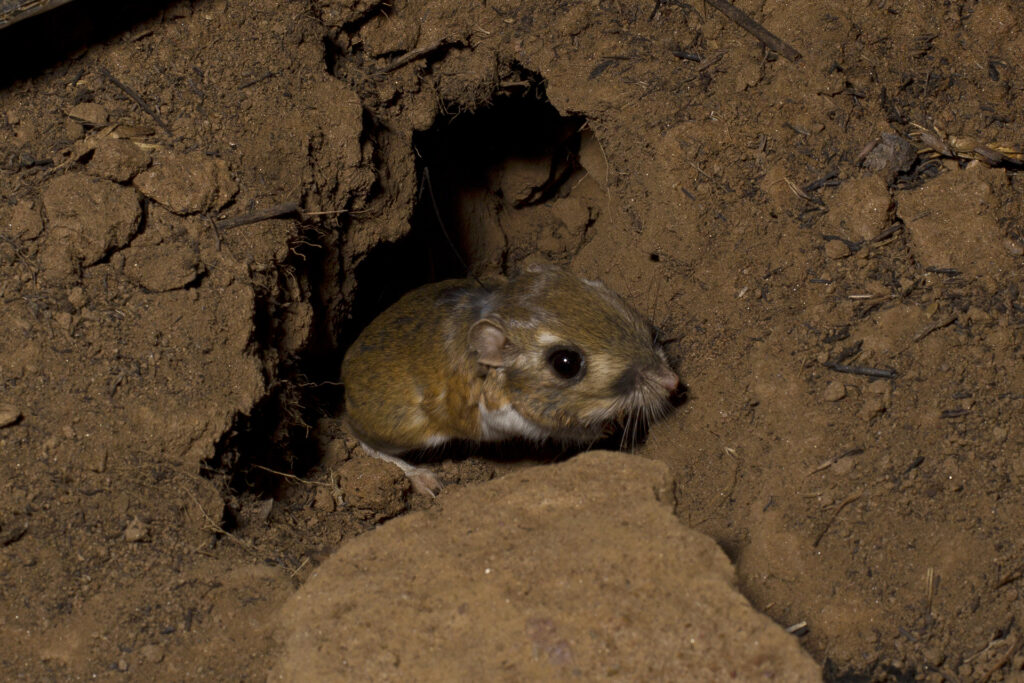
LIFTOFF
Living across deserts in the Southwest, kangaroo rats are nocturnal and small enough to fit into the palm of your hand. In addition to impressive hearing abilities, kangaroo rats’ unusually large hind legs set them apart from other rodent species. Instead of scurrying, they often hop or jump. And when they’re escaping predators, they can spring up to two feet in the air!
After 30 years of conservation efforts, the Stephens’ kangaroo rat was downlisted from endangered to threatened—a big win for this small species.
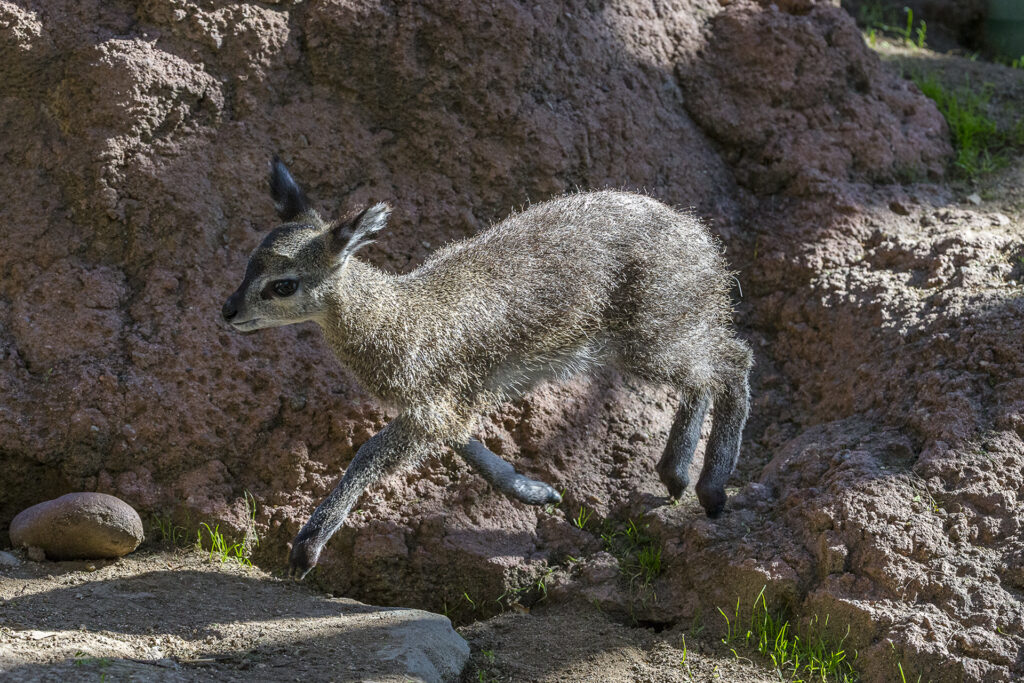
HIGH HOOVES
Klipspringers are leaping legends. Their name is even derived from “rock jumper” in Dutch. These small antelope are sure-footed on the rocky surfaces of kopjes (small rocky hills) across Eastern and Southern Africa’s savannas. On average, they tend to be 2–3 feet tall, but they can jump 10–12 feet high! As they spring between jagged surfaces in search of food and shelter, their dainty-looking hooves help them climb and balance on rocks and ledges as small as a silver dollar.
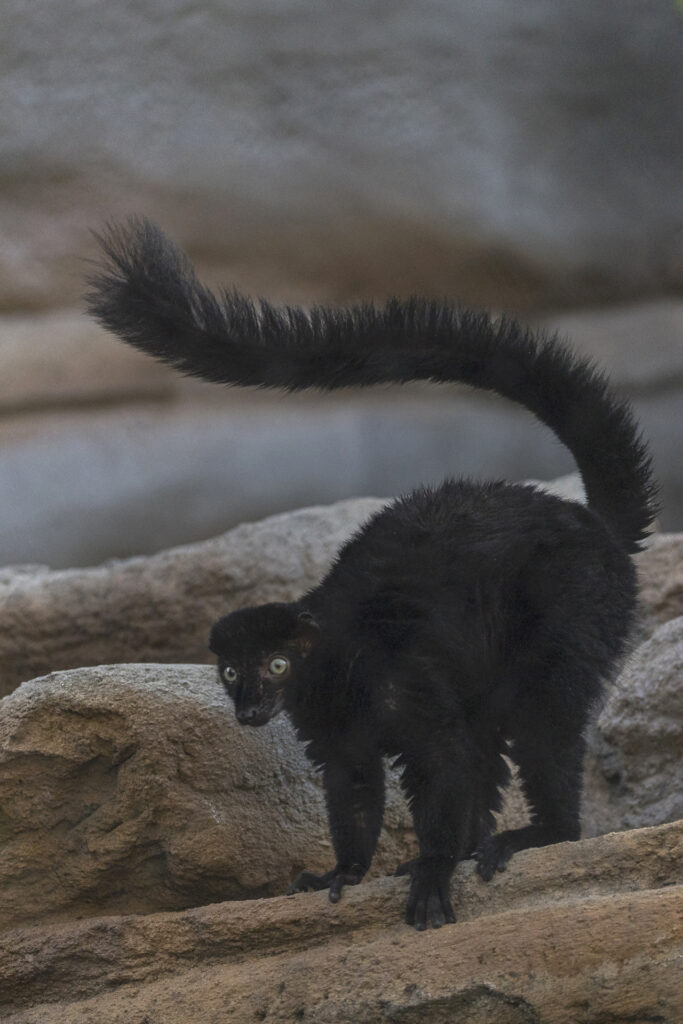
REACHING NEW HEIGHTS
Lemurs are small, dynamic primates that hop from tree to tree using their long, bushy tails for balance. Interestingly, blue-eyed black lemurs are the only primates besides humans that have blue eyes. Unfortunately, this subspecies—like many lemurs—is also critically endangered. Last year, cells from a blue-eyed black lemur were the 11,000th sample cryopreserved in our Wildlife Biodiversity Bank’s Frozen Zoo®, offering hope for the future of this fascinating species.
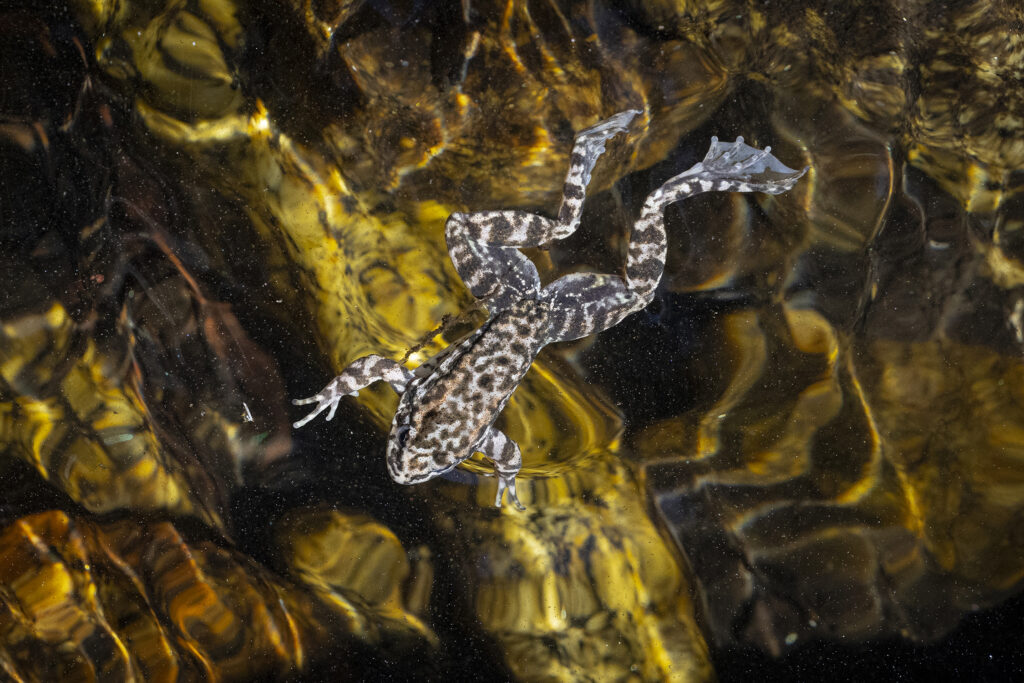
LEAPS AND BOUNDS
Mountain yellow-legged frogs use their powerful hind legs to hop and propel themselves across babbling streams high in Southern California’s mountains. While they do sometimes use this tactic to avoid predators, these compact frogs are less than 3.5 inches long, so leaping can quickly exhaust stamina. Their spotted patterns allow them to seamlessly blend in along rocky creek beds, conserving energy.
For nearly two decades, we’ve been collaborating with our partners to protect and restore this endangered species through a conservation breeding program headquartered at the San Diego Zoo Safari Park. Our conservation teams have translocated over 11,000 mountain yellow-legged frogs back into streams and lakes in Southern California through our Southwest Conservation Hub.

MIDAIR MANEUVER
In a breathtaking feat, killer whales can reach up to 15 feet above of the water in a move called breaching. These magnificent marine mammals display this surface behavior to play and socialize, and even breathe while doing it. Our conservation science teams are using innovative, noninvasive technology to gain insights into endangered killer whale health from a simple natural behavior: exhaling. Discover more about this groundbreaking project here.
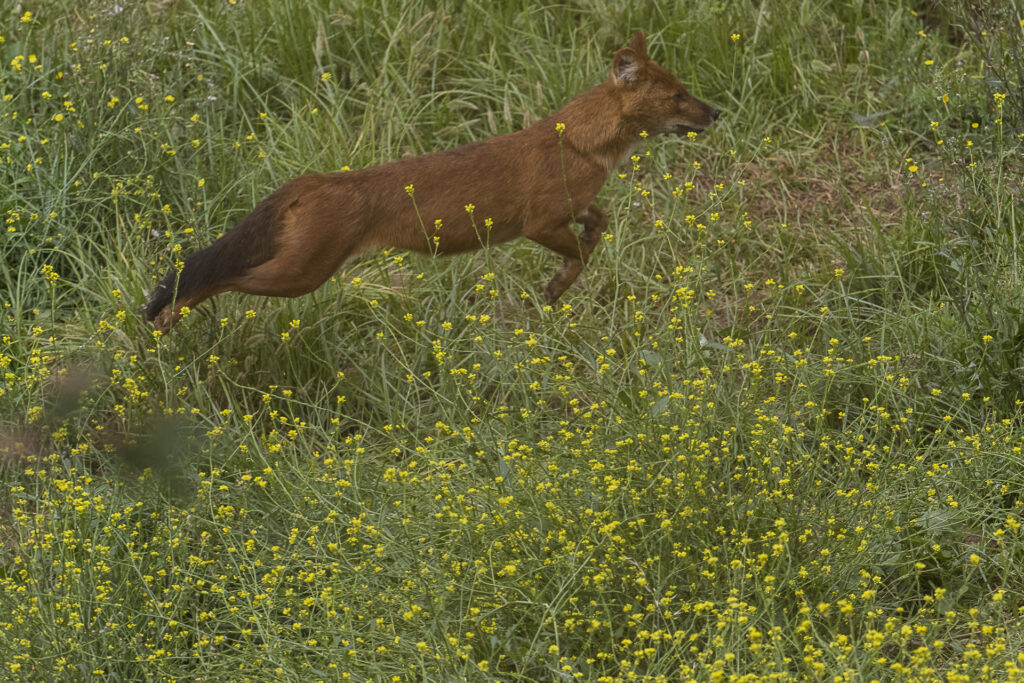
EVERY WHICH WAY
Dholes are elusive wild dogs that use their adaptations to their advantage. They’re incredible jumpers and can spring over seven feet straight into the air. Typically moving in a pack, they occupy dense forests, grassy steppes, and alpine regions throughout Eastern and Southern Asia. With their fast feet, this species surrounds their prey together, chirping to communicate with one another while they hunt. These specialized skills also come in handy to avoid predators.
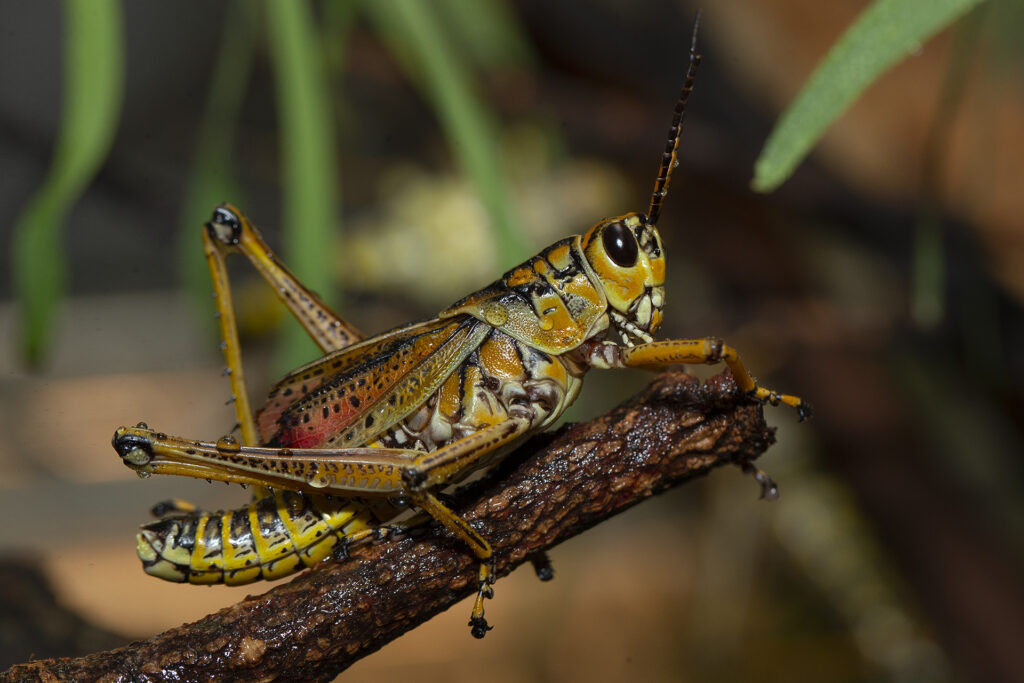
BONELESS BOUNDERS
Spineless marvels also hop into the action. Lubber grasshoppers, Peruvian jumping sticks, and salmon pink hair tarantulas are all unique species known for their powerful legs. Lubber grasshoppers tend to hop from place to place, as you’d expect. But surprisingly, when alarmed, these arthropods hiss, froth, and foam, deterring predators with a horrible smell.
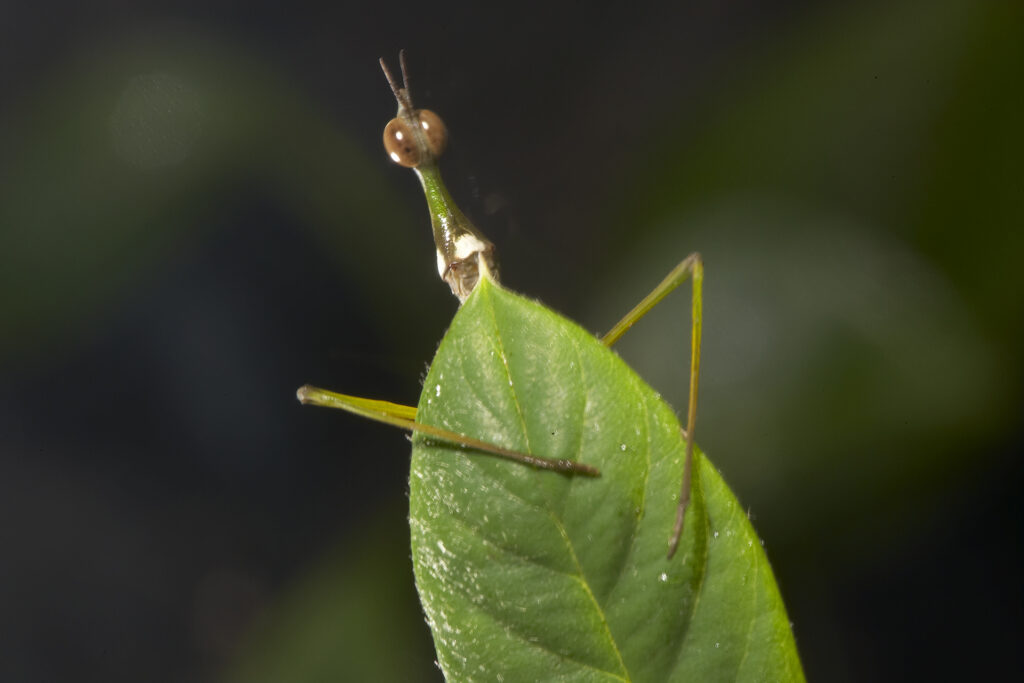
Peruvian jumping sticks are more than meets the eye. Their long bodies may look like sticks, but they’re actually grasshoppers. If you look carefully, their legs give them away. Salmon pink hair tarantulas—the fourth largest tarantula on the planet—are mighty hunters known to pounce as they ambush prey.
Explore the exciting world of insects and see if you can spot these three unusual spineless marvels at the San Diego Zoo’s Wildlife Explorers Basecamp!




